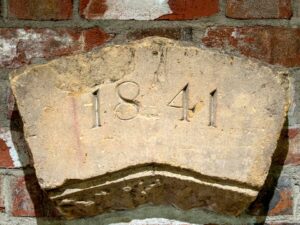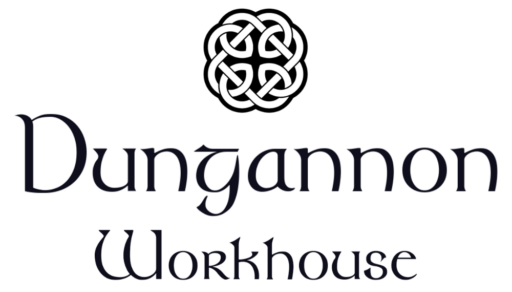From the Summer of 1842 when the workhouse doors opened to the arrival of potato blight in Ireland in September 1845, a total of 156 people died in the workhouse. The majority of these were from Dungannon (31); Tullyniskin (19); Donaghmore (17); Moy (11) and the ‘Union at large’ (11). The average age of the deceased was forty-five years, some ten years younger than the av erage age of the Dungannon workhouse dead between 1842-1900. Significantly, though, some 36.5% of the dead were under the age of eighteen highlighting the dependence on the workhouse by young people at this time. Of those under eighteen, the dead included fifteen who were under one year.
erage age of the Dungannon workhouse dead between 1842-1900. Significantly, though, some 36.5% of the dead were under the age of eighteen highlighting the dependence on the workhouse by young people at this time. Of those under eighteen, the dead included fifteen who were under one year.
Francis Corrigan was the first to die in Dungannon workhouse. He passed away on 12 August 1842 aged 40 years and was described as being from the ‘Union at large’. By the end of the year nine had died. In the following years the number of death rate rose steadily. Children were obviously more suspectable to death and some months could be worse than others. In March 1844, for example, there were twelve deaths in the workhouse, with all but two of them involving children under the age of eighteen. A fever of some kind must have been rampant in the workhouse at this time. The same was true of an eight-week spell in the same year, when in April and May, eighteen people died but this time the average age was over forty, while some were as old as ninety years of age.
The first baby to be born in the workhouse was Patrick Campbell on 11 December 1842, but unfortunately, he only survived a few minutes. Between 1842 and 1881, the period for when records exist, over 500 babies were born in the workhouse. Among those who died during these early years of the workhouse were Catherine Corrigan of Donaghmore, aged 40, and her three-month daughter, also Catherine in September 1843.
Most new born children were baptised by local clergy, although some left the workhouse prior to baptism.
Although a place of sanctuary for the poor, from the beginning the ethos of board of guardians, and the master, was to find suitable employment for those who were able to do so. Within the newly established Union, children were sent out to service or ‘boarded out’, in neighbouring farms and houses. Between 1842 and 1844, for example, a total of 76 children averaging in age of 12-13 years were sent out from the workhouse.




